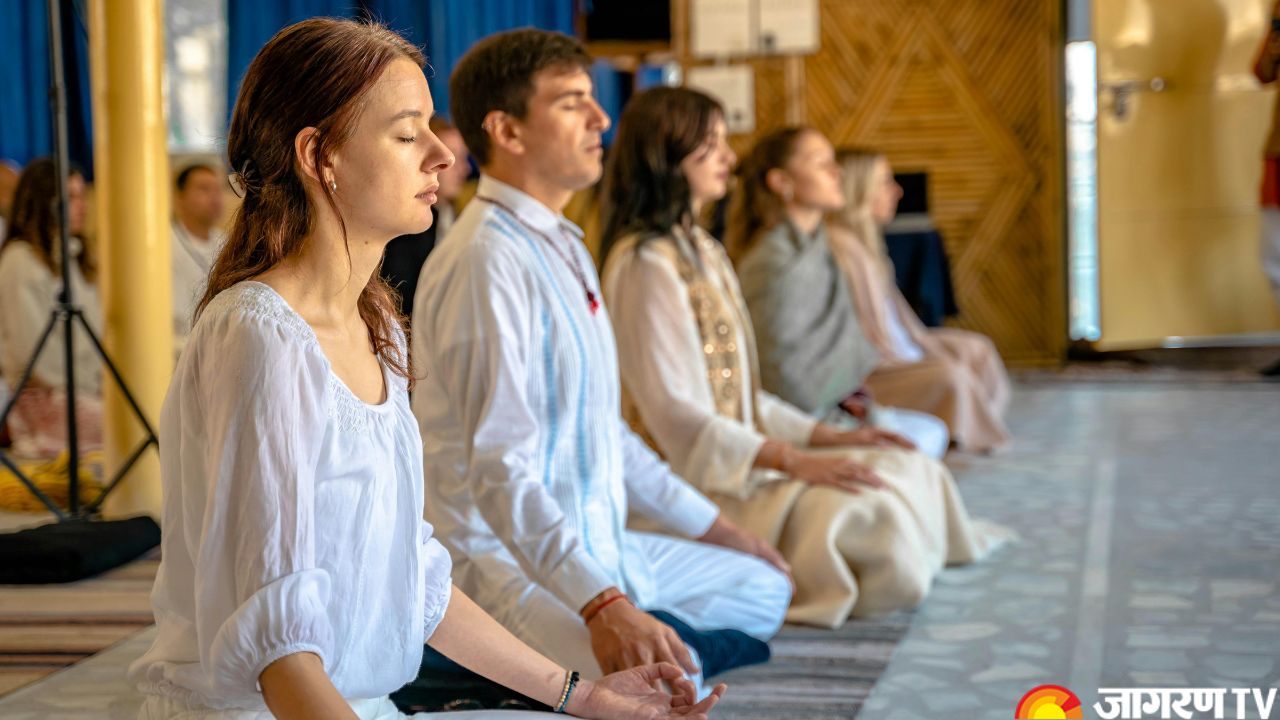International Yoga Day 2025: Different Types of Meditation, Know Techniques, Benefits and The Right Way to Meditate

International Yoga Day 2025: International Yoga Day, also known as the International Day of Yoga, is an important step towards living a healthy lifestyle. International Yoga Day, which takes place every year on June 21st, has evolved into a global phenomenon that promotes physical, mental, and spiritual well-being across cultures. This day is a poignant reminder of yoga's enormous impact on individuals and its ability to promote world harmony.
International Yoga Day 2025 Theme
International Day of Yoga is being observed for the 11th year in a row, with the theme “Yoga for One Earth, One Health.” The subject highlights the interdependence of personal and global health.
International Yoga Day History
On September 27, 2014, India’s Prime Minister Narendra Modi introduced the concept for International Yoga Day during his presentation to the 69th session of the United Nations General Assembly (UNGA). The proposal gained overwhelming support, with a record 177 UN member nations cosponsoring the resolution. As a result, on December 11, 2014, the United Nations formally designated June 21st as International Day of Yoga. The date was chosen because it coincides with the summer solstice in the Northern Hemisphere, the longest day of the year, and a spiritual celebration in many countries, including India.
Why Do We Celebrate International Yoga Day?
International Yoga Day promotes global awareness of yoga's numerous advantages for physical, mental, and spiritual wellness.
-
The day highlights yoga's significance in developing a well-rounded approach to health, emphasising not only physical fitness but also mental clarity and emotional peace.
-
It promotes worldwide harmony by bringing people from all countries and cultures together in a common pursuit of well-being and inner serenity.
-
In an increasingly fast-paced world, International Yoga Day encourages people to embrace activities that can help them manage stress, increase flexibility, and improve their overall quality of life.
-
It honours yoga as an ancient Indian tradition that has transcended geographical boundaries and become a gift to mankind.
-
Yoga connects with multiple Sustainable Development Goals (SDGs), particularly SDG 3: Good Health and Well-Being, by encouraging better choices and lifestyles.
Yoga and Meditation
Yoga and meditation are closely linked techniques that originated in ancient India. Meditation is a unique mental activity that focuses on developing attention and awareness in order to gain mental clarity and emotional tranquilly.
Meditation is frequently regarded as the culmination of physical and breathing techniques, preparing the body and mind for deeper levels of introspection and inner tranquilly. Many yoga traditions include meditation as a fundamental component of their practice, acknowledging its importance in reaping the full benefits of yoga.
Importance of Meditation
-
Meditation has been practiced for thousands of years, with early versions aimed at increasing awareness of sacred and mystical forces. Today, it is widely recognised as a strong tool for improving mental well-being and overall health, assisting people in navigating the stresses of modern life.
-
Meditation relaxes the nervous system, lowers stress hormones like cortisol, and alleviates anxiety symptoms such as generalised anxiety disorder, social anxiety, and obsessive-compulsive behaviour.
-
Regular meditation can lead to a better self-image, a more optimistic attitude toward life, and fewer symptoms of depression. It promotes self-awareness and improves emotional management skills.
-
Meditation fosters a better awareness of oneself and one’s internal landscape by teaching the mind to notice thoughts and feelings without judgment.
-
Focused attention meditation works like a mental workout, strengthening concentration and the capacity to stay focused.
-
Regular meditation has been shown to improve attention and clarity of thought, which can help keep the mind fresh and potentially minimise age-related memory deterioration.
-
Meditation induces relaxation, which can help to enhance sleep quality and alleviate insomnia.
-
Meditation can help alleviate chronic pain by modifying perception and emotional regulation, making it an effective adjunct to medical care.
-
Regular meditation has been demonstrated to lower resting heart rate and blood pressure, easing the load on the cardiovascular system.
-
Meditation can help people build mental discipline, become more aware of triggers for addictive behaviours, and improve self-control.
Benefits of Meditation
The benefits of meditation extend across physical, mental, and emotional dimensions.
Physical Benefits
Lower blood pressure, less chronic pain, better sleep, fewer irritable bowel syndrome symptoms, and increased immune system performance.
Mental Benefits
Increased focus and attention span, greater memory and mental clarity, better problem-solving ability, and less mental chaos.
Emotional Benefits
Reduced stress and anxiety, improved mood, better emotional control, enhanced self-compassion, and the emergence of pleasant emotions such as joy and appreciation.
Spiritual Benefits
A stronger connection to oneself and the world, a sense of inner calm, and a better understanding of one’s goal.
Types of Meditation
There are numerous types of meditation, each with its own approach and focus. Let us learn about some types of meditation and what’s best for you.
Mindfulness Meditation
This practice involves bringing attention to the present moment without judgment. It encourages noticing thoughts, feelings, and sensations as they arise and pass, so cultivating a nonreactive awareness.
Loving-Kindness (Metta) Meditation
This exercise fosters feelings of compassion, benevolence, and warmth for oneself and others. It usually entails silently repeating sentences that express well-being, safety, and enjoyment.
Movement Meditation
This includes physical movement in the contemplative practice, such as walking meditation, Tai Chi, or certain types of yoga where the movements are done with focused awareness.
Transcendental Meditation (TM)
A style of mantra meditation in which the practitioner is given a unique mantra to recite silently. Its goal is to help the mind settle into quieter levels of awareness.
Mantra Meditation
This technique involves silently or audibly repeating a word, phrase, or sound (mantra) in order to calm the mind and induce relaxation and heightened awareness. Transcendental Meditation (TM) is a popular style of mantra meditation.
Spiritual Meditation
Spiritual meditation is a practice that seeks to connect with something bigger than oneself, whether it is a higher power, the universe, one’s “higher self,” or simply a deeper feeling of meaning and purpose. Unlike other types of meditation, which may focus largely on stress reduction or relaxation, spiritual meditation frequently seeks profound self-realization, inner serenity, and a stronger sense of oneness.
Progressive Meditation (Progressive Muscle Relaxation)
Progressive meditation, also known as Progressive Muscle Relaxation (PMR), is a technique for reducing stress and anxiety that involves gradually tensing and then relaxing various muscle groups throughout the body. It is based on the idea that physical relaxation can result in mental serenity.
Visualization Meditation
This involves developing mental images of serene locations, positive outcomes, or desired characteristics in order to aid relaxation, healing, or personal growth.









